
|   |

|   |
Samarpan 2016 - Vaishnavi Kashyap e-mail: vaishu19kash@gmail.com Photos courtesy: Nrityaangan February 26, 2016 Nrityaangan organized its third edition of Samarpan at Don Bosco Hall, Mangaluru on the 6th and 7th of February 2016. The festival was dedicated to Nrityaangan’s founder director Radhika Shetty’s guru Padmini Ramachandran. It was an attempt to bring to the audience of Dakshina Kannada, the various classical dance forms like Mohiniattam, Sattriya and Bharatanatyam. The festival was inaugurated by gurus Chandrashekara Navada and Sharadamani Shekar, followed by the inaugural dance performance by the students of Nrityaangan, Anjali Pilikudale and Thanmayi Alva, with choreography by Radhika Shetty. The program continued with a varnam by Deepa Santhosh in ragam Nattakurunji set to khanda triputa talam. “When all but I stand alone in the midst of nowhere, I call unto thee, Oh Goddess Rajarajeshwari, because it is your blessings that I am in need of,” was the silent call of the piece composed by Madurai R Muralidharan and choreographed by Guru Vani Rajagopal. The second piece (ragam Behag /adi talam) choreographed by Vani Rajagopal included the cry of a nayika frustrated with Krishna for his indulgence with other women. 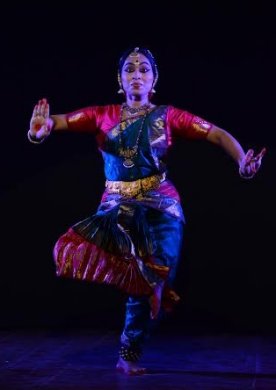 Deepa Santhosh 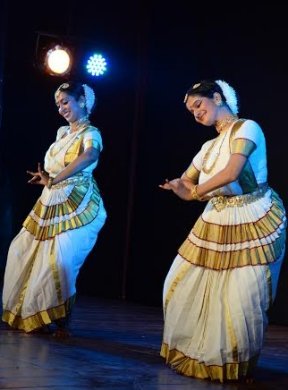 Lakshmi & Ameena  Jyotsna Jagannathan 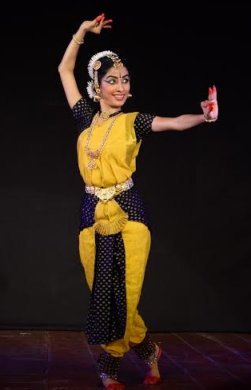 Pranathi Acharya The evening continued with Mohiniattam by Ameena Shanavas and Lakshmi Vishwanathan with the first piece being in praise of Lord Ganesha, the Lord of the Ganas, the remover of obstacles in the path of his devotees. It was set in ragam Samanthamalari and was a Talamalika with choreography by Shyamala Surendran and composition taken from Sri Shankaracharya’s Ganesha Pancharatnam. ‘Rama Sapatam’ depicted the valour of Rama in Ragamalika set to eka talam, with composition and choreography by Kalamandalam Kalyanikutty Amma. The beauty of this performance was that it transported the audience to a world of calm and tranquility. The concluding Bharatanatyam performance was by Jyotsna Jagannathan accompanied by S. Sreelatha on nattuvangam, Jothishmathy on vocal, Harsha Samaga on mridangam and K. Muralidhar on flute. The performance was elegant despite the fact that Jyotsna’s leg was hurt, an attribute of a true, passionate dancer. She commenced with a Mallari set to ragam Gambheera Nattai and mishra triputa talam, composed by Muthuswami Pillai. The varnam in ragam Charukesi and adi talam speaks about the nayika who is overwhelmed with passion, desire and complete surrender to the love of Krishna where she finds the ultimate solace, who yearns for the divine union. This composition of the violin maestro Lalgudi G. Jayaraman gave ample scope to the dancer to exhibit her prowess in both nritta and abhinaya. Jyotsna then presented the famous padam in Tamil, “Teruvil Varano” in ragam Khamas set to rupaka talam, concluding with a thillana by Lalgudi Jayaraman in ragam Mohana Kalyani. The next day commenced with the graceful rendition of Narasimha Kautuvam, Devi stuthi and Thillana by local budding artiste Pranathi Acharya from Udupi, with choreography by her Guru Lakshmi Gururaj. Sattriya is one of the most beautiful, graceful yet exotic dance forms, atleast to the people of the south. Having the opportunity to watch Dr. Anwesa Mahanta hailing from Guwahati was a treat in itself for the audience of Mangaluru who witnessed it for the first time. With the narratives being elaborate, the rendition was understood and appreciated better for its sheer beauty, grace and elegance. The first composition was a pure dance sequence Ramdani. The second one was a Geetarnach, an excerpt from Sankaradeva’s Parijat Haran which is a dialogue between Satyabhama and Krishna over the parijata flower. Both these compositions described the female form. The performance concluded with the depiction of the story of Prahlada and Hiranyakashipu. 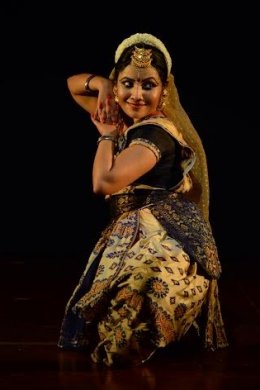 Anwesa Mahanta  Arupa Lahiry In ‘Ahalya’ rendered by Kolkata based Arupa Lahiry, a disciple of Guru Chitra Visweswaran, the production did not retell the known story where Ahalya is turned into a stone by the curse. It picked up nuances that one feels as one goes through various retellings of her plight. It went beyond the usual dance drama format adapted to suit such presentations and plays around the traditional margam format of Bharatanatyam repertoire and basic dramatic techniques of vachika or speech and interesting set details. The production opened with an anjali in Amritavarshini ragam invoking rain. Question arises what has the story of Ahalya to do with rain? Rabindranath Tagore has interpreted Ahalya as A-halya or a piece of land yet to be ploughed or infertile land, the piece of land which becomes fertile by the touch of Indra - the king of Gods in the Hindu pantheon, also the God of thunder and rain. The anjali was followed by alarippu dedicated to Indra and his vajra or thunderbolt. The opening was followed by the introduction to Ahalya as a character in a varnam format interspaced with pure rhythmic portions. Who is she? How does she look? What happens to her? The central piece flowed into the poem of Tagore where the poet asks Ahalya how she felt in the years when she was a stone. This particular section was musically accompanied by a double neck bass called the Matreyee Bass, played by the renowned jazz musician Mainak “Bumpy” Nagchoudhury from Kolkata. The production ended with a short thillana suggesting ultimate happiness or moksha after Ahalya’s liberation from bondage of curse / desires. With a perfect rendition of nritta and abhinaya, the audience was transcended to an alpha zone of appreciation. 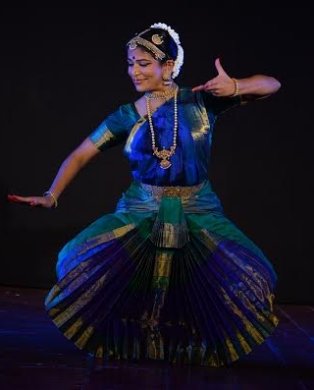 Divya Devaguptapu
The evening ended with the performance of Divya Devaguptapu, a senior disciple of the Dhananjayans. She commenced with a mallari in ragam Nagaswarawali, talam misra jhampa and composed by K.P. Ramesh Babu. The varnam was a hymn in praise of Mother Goddess Gauri, the daughter of the Himalayas, the winner of Lord Shiva’s heart through penance and devotion, the giver of auspiciousness and remover of evils set to ragam Aarabhi, and composed by Iraiyimman Thampi. In the Kshetrayya padam, the heroine is a Swiya Divya Nayika. Proud of the safety of her relationship with her husband, she pens her thoughts of him who is in transit about how her austerities and devotion have borne fruit if he feels as much love towards her, as she does, towards him. She feels his presence all around her. He seems to walk right behind her when she walks up the stairs. He seems to sing along with her when she strums the tambura. She finds herself arguing and conversing with him even in his absence. A popular nottuswaram composition adapted to Bharatanatyam presenting complex and intricate nritta patterns was set to Shankarabharanam. Divya concluded with a Purandaradasa kriti in Sindhubhairavi and talam adi where he talks about the auspicious day of Ekadasi and how no amount of yagas and shastras equal this day and it is only the devotion to Lord Vishnu on this day that brings fortune and happiness. Ably accompanied by Jayashri Ramanathan on nattuvangam, Sreedev Rajagopalan on vocal, K.P. Ramesh Babu on mridangam and Rijesh on violin, her performance stood out for its complex nritta segments and soulful abhinaya. With rare choice of different ragams and talams in each composition, beautiful conceptualization and choreographed by herself, an impeccable stamina and a deep understanding of the nuances of the dance, Divya’s delightful performance was a fitting finale to Samarpan 2016. |